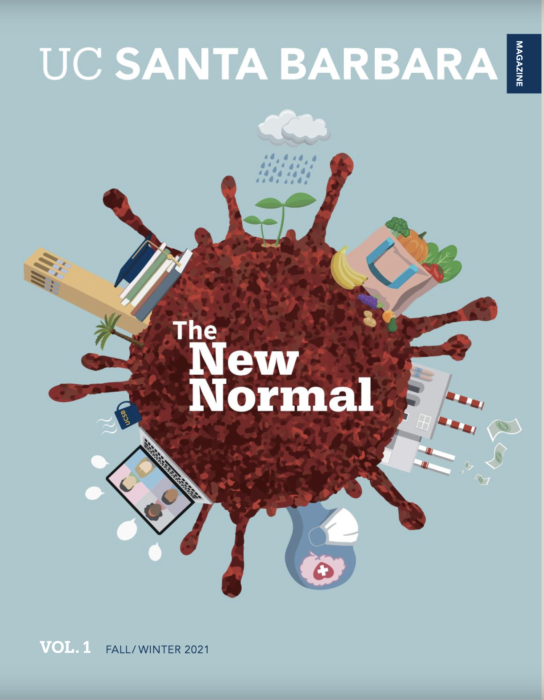 Part of being an artist is bringing pieces of yourself into your work, but painter Christina LoCascio ‘01, whose work is featured in “Gauchos Gone Grape,” takes this connection to a new level. She is truly living her creative life among the vines, painting with wine as a medium and working exclusively with wines from her family’s Larner Winery in Santa Barbara’s Ballard Canyon, where LoCascio, her winemaker husband Michael Larner, and their children Steven (10) and Sienna (8) make their home.
Part of being an artist is bringing pieces of yourself into your work, but painter Christina LoCascio ‘01, whose work is featured in “Gauchos Gone Grape,” takes this connection to a new level. She is truly living her creative life among the vines, painting with wine as a medium and working exclusively with wines from her family’s Larner Winery in Santa Barbara’s Ballard Canyon, where LoCascio, her winemaker husband Michael Larner, and their children Steven (10) and Sienna (8) make their home.
When LoCascio began experimenting with wine painting in 2002 she couldn’t find any information about how to do it. “That was before Instagram or Facebook. Now if you search the hashtag #wineart there’s a bunch of artists that are painting with wine, but I feel like what makes what I’m doing special is that it’s such a part of my life.”
Double majoring in communication and art, LoCascio got her first real exposure to the world of wine in her junior year as an intern for Touring & Tasting Magazine. “It was my 21st birthday and they sent me home with a bottle of wine.” That job also had her researching and writing about wineries and grapes and very quickly she was hooked.
After graduation she worked in the wine industry in Temecula for a short time, until 2002, when Sunstone Winery scion Bion Rice lured her back to Santa Barbara wine country with an offer to work at Artiste Winery, a new venture featuring art-inspired blends that perfectly combined LoCascio’s interests in wine and art.
The idea for painting with wine grew out of classes she would host for wine club members at Artiste that used wine in a similar fashion to watercolor.
Those first few paintings led to a group exhibition in Santa Barbara and then an offer to create wine labels for Artiste. “The exposure of working at the tasting room, having my art on display and then having my art on the wine bottles was great for me,” says LoCascio, who went on to have nine shows at Artiste.
She continues to show her work at the tasting room gallery, although she stopped working there in 2008, when the family opened Larner Winery. They now have a tasting room in Los Olivos, where LoCascio’s art is on display. “From the very beginning, I was drawn to wine and all the wonderful things about it and how it combined art and science and history and so many things,” she says.
Wine remains a consistent media for her work — the many shades of red comprise her color palette and she uses white wine to “lift” color in a similar way that watercolorists use water to soften their paint. And while wine is a frequent subject, she also delves into figurative art and architectural paintings. “I think that in the time that I’ve been painting with wine my art has evolved and it continues to change. I have gone through a lot of different types of things,” says LoCascio, who has recently begun experimenting with leaves as well as the fermentation process of the wine itself. Exploding wine bottles and incorporating spills into female forms are some of her other recent artistic explorations.
Of course, when harvest calls, the paintbrush comes down and it’s all hands on deck for the family business. “We’re really busy, but I’ve come to realize that that’s all part of the process. So, when we’re bringing in grapes and doing the punch down and I’m helping with the wine, and watching the fermentations, it’s just kind of part of it and it all inspires me to think of different ideas,” she says.
“I think the act of being in the winery making the wine is inspiring for the art, too.”
Originally published in the Fall/Winter 2021 issue of UC Santa Barbara Magazine. Cover illustration by Yumiko Glover. To see the story as it originally appeared click here.













